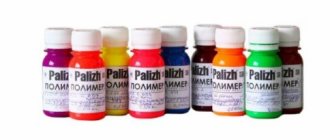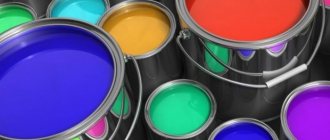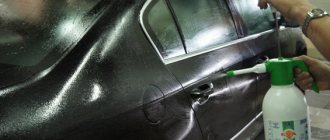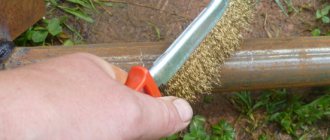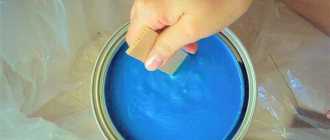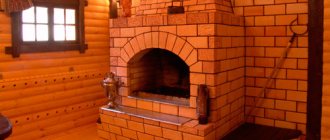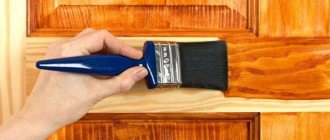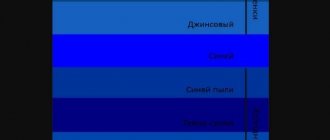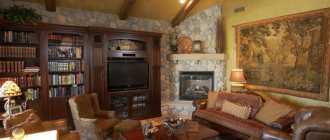Painting the walls is the most popular way to decorate a room during renovation. The choice of paint color depends on the overall design of the room, the preferences of the residents and fashion trends. In order to create the most suitable shade, rather than using paint from the store’s assortment, use color.
Kohler is a special dye that is mixed with paints and varnishes to achieve the desired shade. In this article we will talk in more detail about the purpose of the dye and what kind of paint the color is added to.
Description of the product
Kohler is a highly concentrated coloring substance, thanks to which you can obtain absolutely any color tone. The color can be used for water-based paint, as well as for oil or acrylic paint.
By mixing paint with a color scheme, you can get both a bright tone and a soft pastel one, this will depend on the degree of concentration of the pigment substance in the paint.
Mixing Methods
The tinting process is divided into two methods : manual mixing process and computer painting. The second method helps to obtain the desired tone, which can be used later when saved in a special program. When carrying out manual tinting, a new shade will be obtained each time.
Manual mixing
Tinting paints requires the user to have a base tone and a special coloring component. Coloring pigment should be added before starting work. It is best to follow the rules and proportions that are noted in the instructions for the paint.
The independent tinting process has several advantages:
- beneficial cost savings;
- can be used and diluted during repairs;
- you can create a unique and unrepeatable overall tone that will have no analogues.
Before you start tinting the paint, you need to remember that when mixing by hand, it is simply impossible to get the same shade again.
Application of color
With the help of color, you can bring absolutely any designer’s idea into reality. The process of combining paint products and color pigments is called tinting.
Using tint you can get quite rare paint colors such as gold, silver, copper or bronze. Paint mixed with color can be used to treat the following types of surfaces:
- Concrete.
- Brick.
- Plaster.
- Drywall.
- Tree.
- Chipboard and fibreboard.
The use of a pigment composition will be needed in the following cases:
- Defects when applying the first coat of paint.
- A shade that matches the designer's idea is required.
- To decorate the walls, several tones of the same color are required.
- Lack of previously used paint in stores.
- In case of an error when choosing a paint color in a store.
You can mix colors with paint either at home or by turning to professionals. Color selection and mixing can be done using computer technology.
If you decide to prepare the paint yourself, then mix the ingredients thoroughly, avoiding uneven coloring of the base.
Computer tinting
This method of creating shades is advantageous in that it makes it possible to obtain the desired shade by changing the standard recipe. The new composition is preserved, which allows you to get the desired color again in the future. Tinting paint using a computer program has many advantages:
- fast and accurate shade creation;
- saving new recipes and obtaining new tones;
- tinting several base containers in one color;
- wide range of colors;
- choosing the right bases to create dark shades;
- tinting paint according to color fans of various brands.
Read also: Choosing wear-resistant paint for concrete
Despite a number of positive aspects, computer tinting has a significant drawback - the impossibility of carrying out the procedure at the repair site.
Room after tinting
Varieties of colors
Before you go shopping for color, pay attention to the existing types of this product. The coloring matter is distinguished by the composition of its components, by the form of release and by the area of application.
Based on their composition, there are several types of colors:
With pigments of organic origin. This type of color scheme has a richer and wider range of colors. Due to its origin, paint painted with organic colors quickly fades when exposed to sunlight, so it is not recommended for painting facades.
With pigments of inorganic origin. The choice of colors for this color scheme is much scarcer, but this pigment is resistant to destructive factors, including sunlight.
According to the release form:
- Color in the form of paint.
- Color in the form of dry powder.
- Color in paste form.
They are classified according to the area of application:
- A universal color is a substance that can be mixed with any paint.
- Highly specialized color - this pigment is produced differently for each type of paint.
Step-by-step instruction
The tinting process is not complicated, you just need to adhere to the main rule - do not rush. Many people make the same mistake, which leads to unnecessary additional expenses - they immediately add a large amount of color, and then start mixing the composition. Naturally, in the vast majority of cases, the result will be unpredictable.
We will act carefully and clearly:
- First, let's prepare all the necessary tools that we talked about in the paragraph above;
- Let's prepare a work area for ourselves - cover the floor if it already has a finishing coat, since it is best to dilute the paint in the room for which the shade is being selected;
- We will begin work by preparing a so-called sample, that is, a small amount of tinted paint. At this stage, our task is to decide on the proportions and feel the mixing process itself. After all, the paint must be painted evenly and have a coherent structure;
- To prepare the sample, pour a small amount of white paint into a clean container. Many people don’t write this, but it’s best to use a measuring cup so you don’t have to guess later how much base there was. After this, draw a small amount of color into a syringe without a needle. Add the pigment to the base drop by drop, mix thoroughly and only then, if necessary, add the next drop of dye. You may not notice it by eye, but believe me, with each new drop the shade really changes;
- When, after mixing, the shade is approximately similar to the desired one, stop. The fact is that the prepared composition should be a little lighter than the one you imagined . This is due to the fact that on a large surface, the tone may already be quite saturated;
- Count how many graduations on the scale on the color syringe you used. Write down the volume of the base and color on paper;
- Now you need to do a test staining. This will help you understand whether this is really the shade you need;
- To do this, you don’t need to paint the floor of the wall at all. A small fragment is enough. Literally 40x40 cm. Do not choose a section of the wall in the corner or close to the floor. In such places the shade will always appear darker;
- Color the square at your eye level. And don’t be afraid, if something doesn’t suit you, you can always cover it with the next layer of paint;
- Now we need to evaluate the result. Do not hurry. Look at the square from different angles. Also see how the color looks under different lighting sources. Turn on the overhead light, floor lamp, all together, turn off the light. It is advisable to work in the middle of the day, when there is enough natural light in the room to evaluate the influence of all possible light sources. If time permits, leave the paint on the wall until the next day. In the evening everything may appear completely different;
- If the work is postponed until the next day, close all containers tightly and place them in a dark place;
- Let’s say that the next day the shade is still pleasant to you, then you can safely prepare the working composition. It is very important to dilute the tinting paint with a small margin, just in case;
- When preparing, use the existing proportions. For example, you diluted 5 drops of color in 100 ml of base. This means that for 1 liter of paint you need 50 drops. But this does not mean that you need to add all 50 drops at once. Add 45, mix thoroughly with a whisk, look, add 3 more drops, mix, and only then add the rest of the color and mix again.
As you can see, nothing complicated, just a little patience and diligence.
Colorant for water-based paint
If you need to purchase a color for water-based paint, then pay attention to the paste-like color for universal use.
Paste color is much easier to use, but you must mix it thoroughly with the base, otherwise you risk getting different color intensities when painting.
"Recipes" of the most popular shades
Now in the interiors of modern homes, you can find the most varied and boldest shades. It happens sometimes - you look at a color and think, how did you get it? Let us give an example of the most noble shades and their composition in percentage:
- Royal red – add 5-10% cool blue to a cold red base. You can experiment with the same content, but with warm colors;
- Tomato red - easy to get by adding 5% yellow and 5% brown to the base red;
- Raspberry - its base has a blue color, to which 1-2% of white, brown and red are added. If the intensity is insufficient, add again a small amount of auxiliary colors in equal parts;
- Olive - 10-20% yellow is dissolved in a green base, depending on the desired saturation;
- Turquoise green - add no more than 20% blue to the standard green base;
- Bottle green - obtained by mixing yellow and 20-40% blue;
- Turquoise blue - easy to get by adding 10-15% green to the standard blue color;
- Royal blue – this chic shade is obtained by adding 10-15% black and 2% green to the blue base;
- Saturated dark blue - obtained by adding 5% black and 2% green to the blue color;
- Golden brown - for a shimmery effect, add 10% blue, 10% white, 10% red to yellow. At the same time, the higher the percentage of yellow base, the higher the contrast;
- Mustard - to the yellow base you need to add 5% black, 5% red, 1-2% green;
- Noble pink-gray color - obtained by adding up to 5% black and up to 5% red to white;
- Gray-blue shade – obtained by adding 5% light gray and 1% blue to a white base. With the same proportions, but with the addition of green instead of blue, they will give a gray-green tint;
- Lemon yellow - a bright and positive color is obtained by adding 5% white and 1-2% green to standard yellow. Moreover, if the base yellow is of a warm shade, then the final color will be more yellowish;
- Sea wave color - can be obtained by adding 35%, no more, green and 5% black to white paint;
- Royal purple - obtained by adding small quantities and equal proportions of black and blue to a red base until the desired level of saturation is achieved;
- Burgundy – add 5 to 10% of each color to the red base, but in equal parts – yellow + brown + black;
- Plum is a wonderful shade obtained by adding 10% black, 10% blue and 5% white to a red base.
All of the above is a clear example process . After which the resulting shade can be used either as an independent composition, or as a color, which is usually diluted in a white base.
The article was written for the site remstroiblog.ru.
Colorant for oil paint
To add shade to oil paint, pay attention to a universal, acrylic tinting paste. It mixes quite easily with paint, giving it the desired shade. The color for oil paint is suitable for use when decorating facades.
Looking at the photo of the paint color palette, you will see how diverse it is. By mixing pigment with paint, you can get a unique, inimitable color, with which you will bring to life any idea for renovating your apartment.
Prices for paint colors vary from 30 to 300 rubles. Its cost depends on the manufacturer, the form of release and, of course, the quality of the components used.
